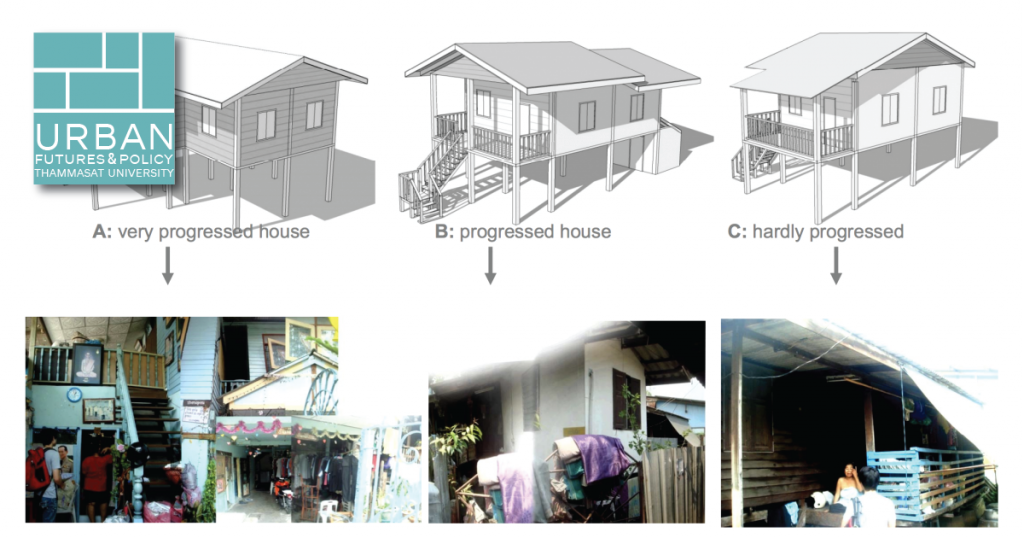Housing
Incremental Housing: Thailand and Vietnam’s Experiences
year 2010-2013
Share on facebook
Facebook
Share on google
Google+
Share on twitter
Twitter
Share on linkedin
LinkedIn
Share on whatsapp
WhatsApp

Bangkok, the capital of Thailand since 1782, marked the beginning of the current Chakkri Dynasty. Nowadays, Bangkok covers an area of 1,443.85 square kilometres. According to the National Statistics Office (NSO) in 20081, Bangkok’s total population was 5,710,883 (2,988,570 are women and 2,722,313 are men) with 2,207,453 households. Between 1883 and 1913, Bangkok’s population expanded from 169,000 to over 365,000 people, a growth rate far in excess of the average population growth in the Kingdom. By 1937, Bangkok was 15 times larger than the second-largest urban settlement of Thailand, Chiang Mai (Askew, 2002: 37). Bangkok remains disproportionately larger than Chiang Mai and as a result, Bangkok has manifested more dominant and exaggerated elements in economy, society and culture compared to other urban areas in Thailand (Baker and Phongpaichit, 2005: 204). The urbanisation of Thailand, especially Bangkok, can be explored through its economic boom.

The industrialisation of Thailand during the 1980s was not only an economic phenomenon; it also included social and demographic transformations. For example, with respect to health, the country’s death rate was in steady decline to 6.4 deaths per 1,000 persons in 1985. The fertility rate declined sharply since the 1960s as a result of birth control campaigns, rising prosperity and delayed child-bearing for education and career. Hence, the Thai population decreased from about 5 to 3.7 persons per household (according to National Statistics, 2005) between 1987 and 2005, whereas the number of families increased (ibid: 201; Hewison, 1996: 149). Such industrialisation and demographic transformation have provided for a positive picture of Thailand’s development. Between 1947 and 1980, the official number of municipal areas was only 1.7 percent. By 1986, there had been a 5.9 percent increase. This increasing urbanisation resulted in a decrease of designated rural areas to only 30-40 percent in 2005 (ibid: 149). In addition, the GDP per head tripled from the 1980s (20,000 Baht) to the 2000s (by almost 60,000 Baht) (Baker and Phongpaichit, 2005: 201). Nevertheless, the focus of development in Thailand on urbanisation has an implication for an increasing disparity between the urban and the rural areas. In this respect, most of the positive pictures in terms of the benefits of industrial development have been mainly concentrated in Bangkok (Marome, 2009)
Research Team
Asst.Prof. Wijitbusaba Marome
Faculty of Architecture and Planning, Thammasat University
Asst.Prof. Supreedee Rittironk,
Faculty of Architecture and Planning, Thammasat University
